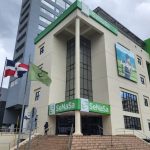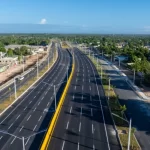Santo Domingo Colonial City Program addresses flood risks

Santo Domingo.– The Santo Domingo Colonial City Comprehensive Tourism and Urban Development Program has announced its plans to reduce flooding risks in El Conde Street and increase the resilience of the historic center to climate change events.
These measures are based on the Plan for Adaptation to Floods Influenced by Climate Change in the Colonial City of Santo Domingo, prepared by the Inter-American Development Bank (IDB) and the Ministry of Tourism, with the collaboration of competent institutions such as the City Council of the National District (ADN).
This research proposes that all urban rehabilitation actions in the Colonial City be adapted to the effects of climate change and recommends intervention measures for flood risk reduction, which the Program will implement.
According to this plan and its findings, the El Conde Street rehabilitation project will integrate a Sustainable Urban Drainage System (SUDS) as part of the solution, which will allow it to increase the soil infiltration capacity of this road, based on three schemes:
- The placement of a water collection and drainage system by percolation (absorption).
- The installation of runoff water storage tanks at intersections.
- The placement of permeable pavement in specific areas and the installation of floodable tree pits distributed longitudinally along El Conde.
It is important to note that the current intervention carried out by our Program does not affect the existing pluvial drainage system in the Colonial City, but rather seeks to provide solutions by implementing measures aimed at mitigating pluvial floods.
The recent floods that affected El Conde Street were due to the deficiency of the pluvial sewerage system in the northern area, which drains through Palo Hincado Street to Santomé Street, directly affecting El Conde Street.
The recovery work on El Conde Street, whose construction is expected to start in February 2025, in addition to a sustainable pluvial drainage system, will add new materiality with permeable pavement.
The water collection and drainage system by percolation (absorption) will help the existing traditional drainage system, adding 1,200 square meters of permeable surface, thus contributing to reducing the impact on the pluvial system, adding 300 cubic meters of rainwater collection tanks, which would recycle the runoff of that same rainwater through the drainage network until reaching the river network to be used for irrigation and cleaning.
The urban intervention, the design and the executive project of rehabilitation that will be executed on this road has started from a strategy based on the studies of the infrastructures, in the survey of the buildings, in climate risks and in the patrimonial valuation of that street.
With the implementation of the Adaptation Plan, the Program also seeks to protect lives, livelihoods, and share knowledge on disaster risk management.
Revitalization Program
The Santo Domingo Colonial City Comprehensive Tourism and Urban Development Program (PIDTUCCSD) aims to revitalize the historic center in its urban, economic, and cultural tourism aspects.
It is financed by the Inter-American Development Bank (IDB) and co-financed by the European Union. It is executed by the Ministry of Tourism, in coordination with the Ministry of Culture (MINC) and the City Council of the National District (ADN).
Link to the Plan for Adaptation to Floods Influenced by Climate Change in the Colonial City of Santo Domingo: https://publications.iadb.org/es/publications/spanish/viewer/Plan-de-adaptacion-a-inundaciones-influenciadas-por-el-cambio-climatico-Ciudad-Colonial-de-Santo-Domingo–Republica-Dominicana.pdf















If this drawing is the actual plan for the redevelopment of El Conde, then it is a disappointment. You need more protection from the sun. Also more greenery. The wall garden that was removed at the parking garage was beautiful. People would stop and take photos. As does the park with trees attract people, so will the remainder of El Conde if it is more green and imaginative.